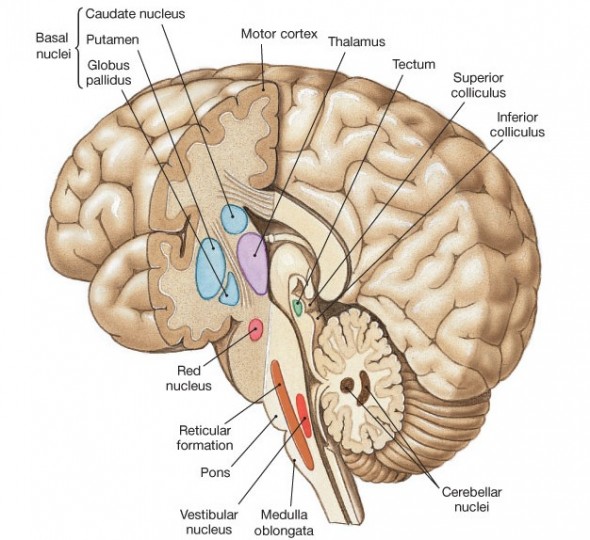
Procedural memory is the unconscious memory of skills and how to do things, particularly when performing procedures involving both cognitive and motor skills, such as tying a shoelace, playing the guitar, or riding a bicycle. These memories are typically acquired through repetition and practice (or procedural learning), where all the relevant neural systems work together to automatically produce the activity.
Similar to other types of long-term memory, procedural memory is retrieved when needed. Because procedural memory comprised of automatic sensorimotor behaviors that are so deeply embedded, most people are no longer aware of them. Procedural memory is sometimes referred to as implicit memory, as previous experiences aid in the performance of a task without explicit and conscious awareness of these experiences. (Technically, it is a subset of implicit memory.)
Procedural Memory & The Brain
Different types of long-term memory are stored in different regions of the brain. The cerebellum, hippocampus, neostriatum, and basal ganglia have all been identified as being involved in memory acquisition tasks (Squire, 2004).
- Declarative memories are encoded by the hippocampus, entorhinal cortex, and perirhinal cortex (all within the medial temporal lobe of the brain), but are consolidated and stored in the temporal cortex and elsewhere.
- Procedural memories do not appear to involve the hippocampus at all and are encoded and stored by the cerebellum, putamen, caudate nucleus. and the motor cortex, all of which are involved in motor control.
- Learned skills (such as playing a musical instrument, riding a bicycle) are stored in the putamen; instinctive actions (such as grooming) are stored in the caudate nucleus; timing and coordination of body skills (such as throwing and catching a Frisbee) are coded in the cerebellum.
Thus, without the medial temporal lobe (the structure that includes the hippocampus), a person is still able to form new procedural memories (such as playing the piano, for example), but cannot remember the events during which they happened or were learned.
Basal Ganglia

The basal ganglia system of the brain, particularly the striatum (or neostriatum), is believed to be important in the formation and retrieval of procedural memory. Research showed that patients with Parkinson’s disease have deficits in specific types of implicit procedural learning, such as Serial Reaction Time (SRT) task, but not others, and Complex Dynamic Control (CDC) that involves problem-solving (see Witt et al, 2006).
Lengler and Steger (2012) discovered that for procedural skill acquisition based on practice, models like the autonomous phase in Fitts & Posner’s model might be amended by the assumption that repeated presentation of similar inputs is not only required on the level of ensembles of neurons, but even on the level of single cells. (see Lengler & Stegner, 2012; Resting enhances learning of coherent signals on cellular level in STDP simulations).
Various clinical tests have been devised to elucidate evidence on which part of the brain governs what kind of (procedural) learning. Patients with degenerative disorders (e.g., Amnesic, Alzheimer’s, Huntington’s, Parkinson’s disease) serve as good subjects for this kind of testing because parts of the brain that govern procedural memory in these patients have degenerated. Examples of tests include: pursuit rotor task, serial reaction time task, and mirror tracing task. (Link)
Resources:
- http://en.wikipedia.org/wiki/Procedural_memory
- http://www.ucl.ac.uk/ion/departments/sobell/Research/MJahanshahi/Projects/ProceduralLearning
- http://www.human-memory.net/brain_parts.html
- http://www.indiana.edu/~idtheory/methods/m4d.html